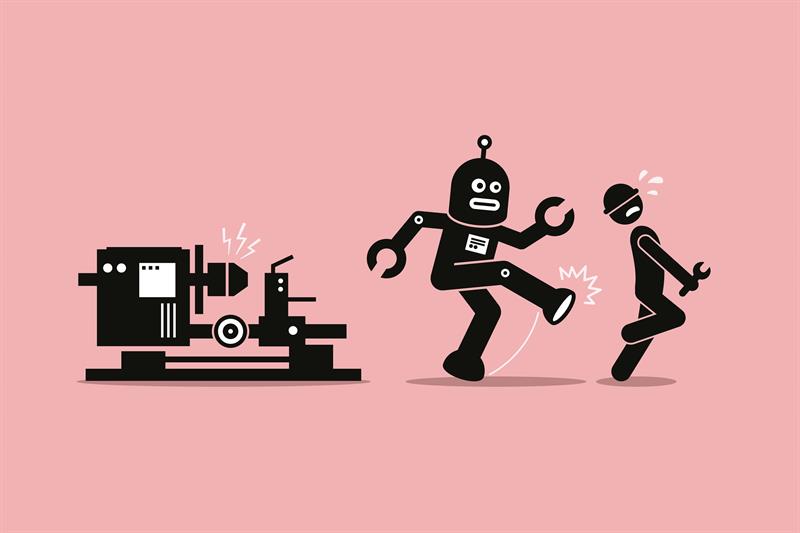Introduction: AI Job Disruption Debate
The rise of Artificial Intelligence has given rise to innovation and anxiety. Automation infiltrates industries, employees are rapidly asking: “Will a robot take my job?” This widespread fear of displacement is valid. According to WEF’s Future of Jobs Report, automation may displace 83 million jobs by 2027—but also create 69 million new roles. The difference lies in how companies respond.
In this post, we explore what companies can do to alleviate job loss fears from AI, equipping their workforce with confidence and preparing for a more collaborative future between humans and machines.
Understanding the Root of AI Job Loss Fears
The Fear Is Real—and Rational
From factory floors to marketing agencies, AI tools such as ChatGPT, Midjourney, and robotic process automation (RPAs) are taking tasks to be repeated. This infection has triggered anxiety, especially in areas such as:
- Customer support
- Data entry
- Retail
- Transport & logistics
The insecurity of the job is not only about being replaced – it is also about not being ready for shift.
Psychological and Economic Influence
When employees fear becoming obsolete, it leads to:
- Decreased productivity
- Resistance to change
- Higher turnover
- Mental health issues
This is no longer an HR issue – this is a strategic trade risk.
Active Steps Can Take Companies
1. Invest in Racing and Upskilling
Companies should give priority to workforce development. Provide access to:
- Online courses (e.g., Coursera, edX)
- Internal mentorship programs
- Paid certifications in digital tools and AI platforms
This gives employees the right to develop in the roles prepared for the future-from data analysts to AI operators.
📘 Learn How AI Tools Help Build Trust Between Brands and Users →
2. AI Promotion Of Transparency
When businesses secretly deploy AI, it triggers doubt. Instead:
- Announce AI implementation plans clearly.
- Hold Q&A town halls or webinars.
- Explain which tasks are automated—not entire jobs.
This creates psychological safety and trust.
3. Design Jobs Again, Don’t Finish Them
Instead of cutting the roles, redefine them. For instance:
Old Role | AI-Assisted Role |
Data Entry Clerk | Data Quality Analyst |
Call Center Agent | AI-Supported Customer Specialist |
Social Media Scheduler | AI-Powered Brand Strategist |
Such redesigns emphasize the human-AI partnership and not rivalry.
4. Build Ethical AI Policies
Your company needs a clear ethical framework, including:
- Fair use of automation
- Avoid prejudice in algorithms
- Human-in-loop decision
Show your task force that you are not replacing people carelessly – but are constantly increasing the work.
5. Promote The Culture Of Lifelong Learning
AI’s evolution is constant. Companies should embed continuous learning in their DNA by:
- Offering learning stipends
- Organizing monthly tech talks
- Rewarding learning milestone
It keeps the employees engaged and agile – ready for the next disruption.
6. Cooperate with Government and Institutions
Private-public partnerships can offer:
- Subsidized retraining
- Tax benefits for ethical AI use
- AI job fairs or hackathons
Companies that work with institutions gain social credibility and regulatory alignment.

Company Success Stories: Leading by Example
AT&T
AT&T invested more than $ 1 billion in Uppscript programs, training staff in cloud computing, cyber security, and data science-inheritance in the take-forward career.
IBM
IBM promised to resume 30 million people by 2030, especially unprepared communities through their “skillbuild” platform.
These companies prove that it is not possible to adopt responsible AI – it is beneficial.
Why Does This Long -Term Trade Matters
Alleviating job loss fears does more than protect your reputation:
- ✅ Boosts employee retention
- ✅ Fosters innovation and agility
- ✅ Strengthens employer branding
- ✅ Aligns with ESG goals
Ignoring these apprehensions can lead to union pushbacks, media investigation or lost talent.
Self-Check: Is Your Company Doing Enough?
Ask yourself:
- Have we transparently changed our AI plans?
- Are we offering training opportunities?
- Do employees feel empowered—not threatened?
If not, it’s time to act.
📈 Also Read: How AI Is Transforming Marketing Agencies →
🎯 Start Future-Proofing Your Workforce Today
Let our experts help you build ethical, AI-driven strategies that support your people.
External Sources and Research
- World Economic Forum – Future of Jobs Report 2023
- Harvard Business Review: Why People Really Quit Their Jobs
- McKinsey: Jobs Lost, Jobs Gained
FAQ: Addressing General Concerns
Q1: Which industries are at risk from AI?
A1: Industries such as manufacturing, logistics, customer support and retail are seeing the highest automation – but new jobs are emerging in AI morality, data analysis and early engineering.
Q2: Will the roles not change soon?
A2: Jobs required by emotional intelligence, creative thinking and human decisions – such as doctors, teachers, or strategic leaders are less likely to be automated.
Q3: Can small businesses bear the expenses of AI Upsciling programs?
A3: Absolutely. Many cheap or free platforms such as Google Career Certificates or Coursra.org offer courses that small teams can easily adopt.
Q4: Is AI actually finishing jobs – or just changing them?
A4: Mostly changing them. While some tasks are automated, the main roles develop – often become more strategic, analytical or creative.
Conclusion: AI Is A Tool, Not Threatened
AI is not a villain – it is a catalyst for a clever future. Companies addressing AI Job Loss quickly, morally and sympathetically fears, which will lead to workforce change. The time to act is now.
🔵 Partner with Us to Build a Human-Centric AI Strategy →

